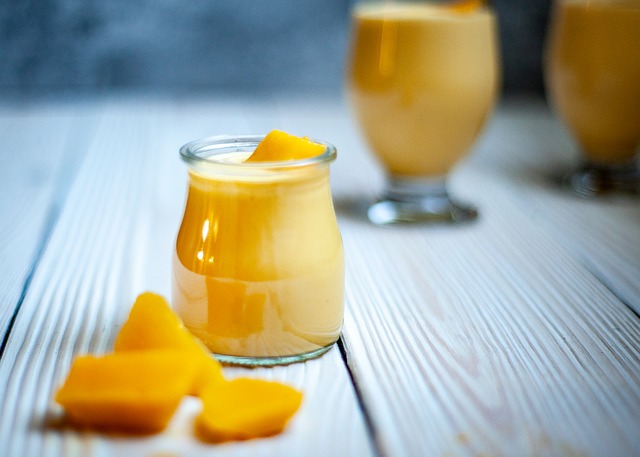Oh my gosh – nutrition and diet info is everywhere!
There is certainly no shortage of health information available on the internet, in the media, and from well-meaning family and friends. We are definitely on information overload! Sometimes my mind just spins with all the information that is available. It can be difficult to wade through all the information to figure out what is true and what is not.
That’s where a health coach – like me – comes in. I can push through the noise and point you in the right direction. Why? Because some of that information you are reading may be doing you more harm than good.
In this week’s blog, I am spilling the beans about some common healthy eating myths and what matters just as much or even more than “how much” you eat.
And each expert and association tries to lead you in their direction because they know best and their advice is going to help you. Right?
Well, maybe…
Everyone has heard (and maybe lived through) the intense focus on how much you eat. This has gained way too much attention because while this does affect your weight and energy level, it’s certainly not the “holy grail” of health.
Let’s focus a bit more on the often overlooked (and proven) benefits of what you eat and drink and how you eat and drink it.
What you eat and drink
The “calories in, calories out” philosophy (i.e. how much you eat) is being drowned out with research on other factors that may be just as important. Don’t get me wrong; limiting calories, carbs or fat can certainly help you lose weight but that’s simply not the only factor for long-term weight loss and maximum energy for everyone.
When the intense focus on how much we ate didn’t work in the long-run it wasn’t really a surprise. We kinda knew that already, didn’t we?
You can certainly still continue to count your calories, carbs, and fat but don’t forget to also pay attention to what you eat.
Ideally, you need a varied diet full of minimally-processed foods (i.e. fewer “packaged” “ready-to-eat” foods). This simple concept is paramount for weight loss, energy, and overall health and wellness.
Every day this is what you should aim for:
● A colorful array of fruits and veggies at almost every meal and snack. You need the fiber, antioxidants, vitamins, and minerals.
● Enough protein. Making sure you get all of those essential amino acids (bonus: eating protein can increase your metabolism).
● Healthy fats and oils (never “hydrogenated” ones).
There is a reason some fatty acids are called “essential” – you need them as building blocks for your hormones and brain as well as to be able to absorb essential fat-soluble vitamins from your uber-healthy salads. Use extra virgin olive oil and coconut oil, eat your organic egg yolks, and get grass-fed meats when possible. You don’t need to overdo it here. Just make sure you’re getting some high-quality fats.
How you eat and drink
Also pay attention to how you eat and drink.
Studies are definitely showing that this has more of an impact than we previously thought.
Are you rushed, not properly chewing your food, and possibly suffering from gastrointestinal issues? Do you drink your food?
When it comes to how you eat let’s first look at “mindful eating.”
Mindful eating means to take smaller bites, eat slowly, chew thoroughly, and savour every bite. Notice and appreciate the smell, taste and texture. Breathe.
This gives your digestive system the hint to prepare for digestion and to secrete necessary enzymes.
This can also help with weight loss because eating slower often means eating less. Did you know that it takes about 20 minutes for your brain to know that your stomach is full?
Thought so!
We also know that more thoroughly chewed food is easier to digest and it makes it easier to absorb all of those essential nutrients.
And don’t forget about drinking your food.
Yes, smoothies can be healthy and a fantastically easy and tasty way to get in some fruits and veggies (hello leafy greens!) but drinking too much food can contribute to a weight problem and feelings of sluggishness.
Don’t get me wrong a green smoothie can make an amazingly nutrient-dense meal and is way better than stopping for convenient junk food – just consider a large smoothie to be a full meal not a snack. And don’t gulp it down too fast.
If your smoothies don’t fill you up like a full meal does try adding in a spoon of fiber like ground flax or chia seeds.
Summary:
Consider not only how much you eat but also what and how you eat it.
Recipe (Smoothie meal):

Chia Peach Green Smoothie
Ingredients
- Spinach handful
- 1 tbps. Chia seeds
- 1 Banana
- 1 Peach chopped
- 1 cup Almond Milk unsweetened
Instructions
- Add ingredients to blender in order listed (you want your greens on the bottom by the blade so they blend better and have the chia on the bottom to absorb some liquid before you blend).
- Wait a couple of minutes for the chia seeds to start soaking up the almond milk.
- Blend, serve and enjoy!
Notes
P.S. Ladies, for more recipes, health, weight loss and tips on energy, join me in my private Facebook group >>HERE<<.
References:
http://summertomato.com/wisdom-wednesday-salad-dressing-is-your-friend; https://authoritynutrition.com/20-reasons-you-are-not-losing-weight/; http://summertomato.com/the-science-behind-mindful-eating-what-happens-to-your-body-during-a-mindful-meal; http://nutritiondata.self.com/facts/nut-and-seed-products/3061/2



Thanks Lynne, super helpful and easy to do.